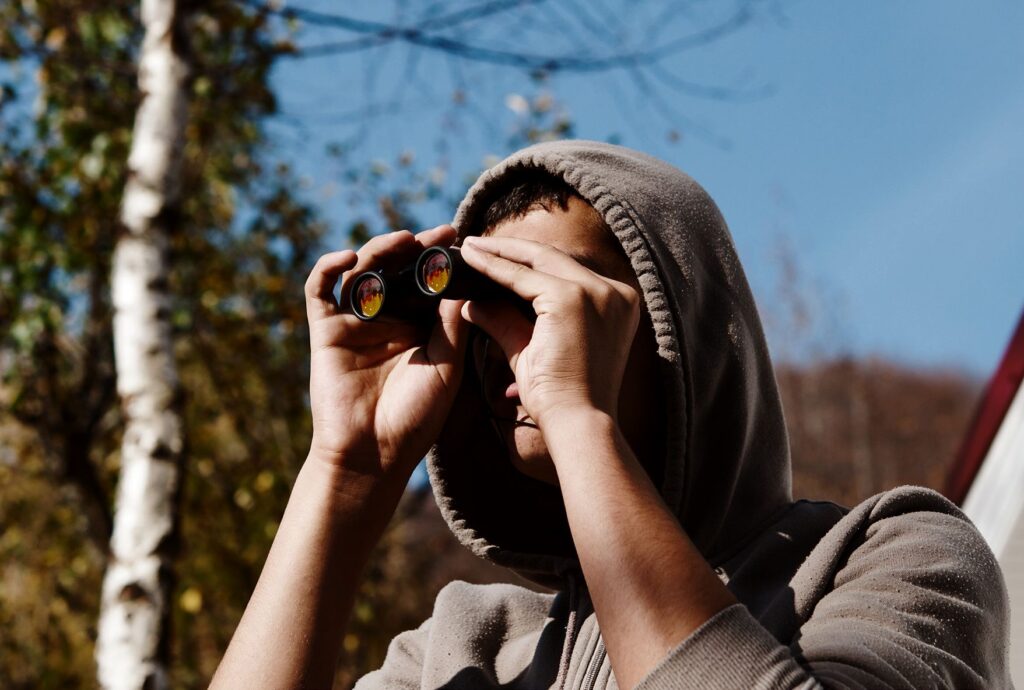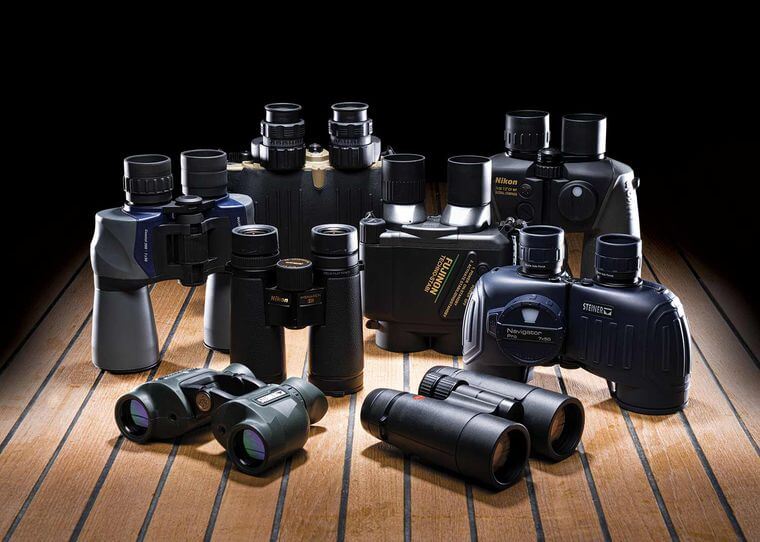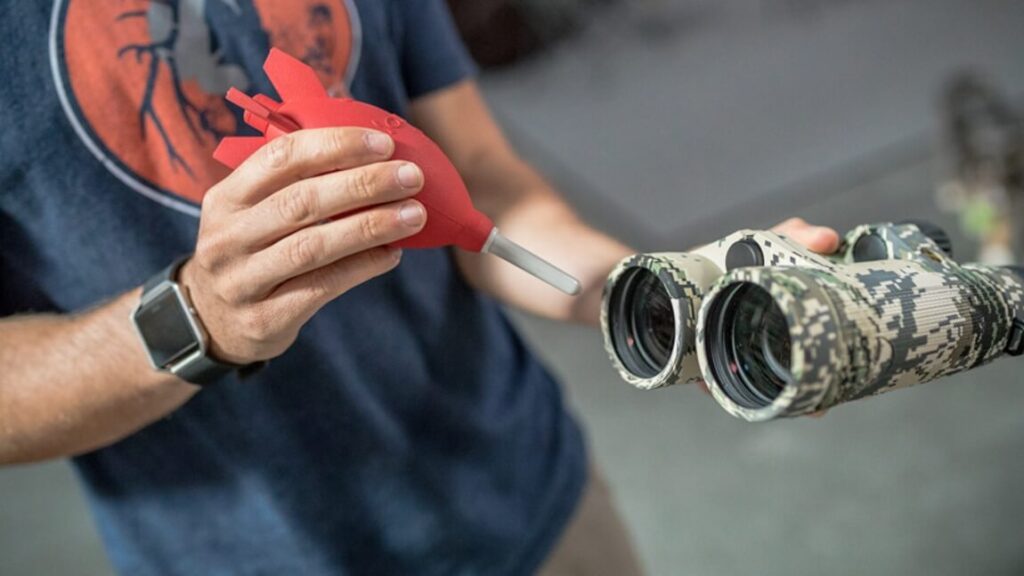

Thermal binoculars are supposedly the Rolex of the optic world. They have so much next-level technology integrated within their operating mechanism that it’s surreal, almost like nothing should go wrong. But sometimes it does, and you find the least magnification power of particular binoculars is too little for your minimum focusing distance. Avoid such disappointments by choosing the best thermal binocular from our rated products below.
These binoculars have a number of things in common that propel them to the A-list of thermal binoculars. They have a magnification range that is customizable to varying distances, ensuring that you can suitably enlarge the target no matter how close or far it is. Their high resolution, relatively far above what you get in standard binoculars, produces sharp, high-contrast images of great quality. Their long battery life keeps you engaged for hours, and they are light enough to carry and use over long stretches of time. Keeping all these in mind, our Editor’s Choice goes to the ATN Binox 4T 640. Sounds like the kind of binoculars you’d wish to own? Read on to discover even more.
More features: internal SD card, 10-30 mm eye relief, 12.5×9.7 degree viewing angle, full HD video recording, IR illuminator
With a 60-70 mm interpupillary adjustment range and 10-30 mm of eye relief, the ATN Binox 4T 640 is designed to give you the best observation experience. This pair of binoculars uses a highly sensitive sensor, rangefinder, and e-compass to detect the location of the target, and thanks to a built-in IR illuminator, you can use it at night with great results. It has a magnification range of 2.5-25x and an objective lens diameter of 50 mm. The minimum focus distance is 10 feet, and the 12.5×9.7-degree viewing angle gives you an unobstructed view of your target. The Smooth Zoom feature brings objects that are thousands of yards away closer while maintaining the focus all through. A built-in rangefinder shows you the target’s distance from where you are, which helps you get the best shot if you’re hunting.
These binoculars have a full HD video recording feature that records on a built-in SD card in a convenient pairing that eliminates the use of a USB cable and eases the events recording process. Using Ballistic Information Exchange, they also directly transmit data to ATN Smart devices, facilitating instant calculations and automatic adjustments to your optics. If you do not have an ATN Smart device, you can download the Laser Ballistics app to access the same data from your binoculars, but in this case, you’ll need to make the necessary adjustments manually, a small price to pay given how accurate the data is.
It’s powered by an internal lithium battery with a runtime of 16+ hours.
More features: 6*4.7 degree viewing angle, laser rangefinder, micro SD card compatible, ballistic information exchange
The ATN BINOX 4T 384 boasts a high picture resolution at 1280×720 pixels. Factor in the high-contrast HD display and you have a set of binoculars with exceptional image clarity. Enjoy a detectable range of up to 1,000 yards, and with a minimum focus distance of 5 feet, you can use it on targets that are both near and far. It has magnification power of 4.5-18x and a viewing angle of 6×4.7 degrees. Granted, this field of view angle is smaller than what many high-spec binoculars offer, but the built-in laser rangefinder more than makes up for this with its precise ranging calculations. This pair of binoculars uses Ballistic Information Exchange to communicate to smart devices and send crucial data indicating the exact distance between you and the target and what angle provides the best view.
It has black hot and white hot settings and color modes which you can use to improve image visibility.
Because it has a built-in IR illuminator, you can use it at night and enjoy the same excellent visibility you would get during the day.
You can use it with a micro SD to record events, and you can also share the same simultaneously, thanks to the dual Wi-Fi steaming feature.
Its battery lasts a cool 16 hours, meaning you’ll have plenty of time to indulge in whatever activity you wish to engage in before the battery dies.
This is a weather-resistant unit that you can use in wet weather without worrying about moisture damage.
More features: 50Hz refresh rate, IPX7 waterproof rate, 8 colour palettes, AMOLED display
Despite its compact size, the Pulsar Merger LRF XP50 boasts impressive features that enhance your outdoor experiences. Engineered for prolonged observations, its ergonomic design ensures your comfort during wildlife tracking or scenic surveys.
The high-definition thermal imaging sensor offers stunning clarity with a resolution of 640×480 pixels, complemented by versatile image processing algorithms and three amplification levels.
Equipped with a fast aperture F50/1.0 germanium lens, this imager excels in low-light scenarios so you can enjoy a remarkable detection range of up to 1800 meters, while dual independent batteries provide up to 10 hours of continuous operation. Explore your surroundings with variable magnification from 2.5x to 20x.
Capture every moment using the integrated photo and video recorder, offering 16 GB of cloud storage. Control and update the device remotely via the Stream Vision 2 App on your iOS or Android device. With improved Wi-Fi connectivity, high-contrast AMOLED displays, and a choice of 8 color palettes, this imager adapts to your preferences.
Rugged and reliable, it boasts an IPX7 waterproof rating and operates between -25 to +50°C. Elevate your outdoor adventures with a blend of classic aesthetics and cutting-edge technology, and experience the world in exceptional detail.
More features: 50Hz refresh rate, IP54 waterproof rate, gray color mode, OLED display, 35mm F1.0 infrared lens
Introducing the AURORA A3, a handheld thermal imager with a huge screen that was carefully designed for ardent hunters. This state-of-the-art tool redefines observation comfort and raises the bar on your hunting experience. The AURORA A3 delivers uncompromised image quality and immerses you in a world of high-definition observation like never before, thanks to its high-end detectors and 35mm F1.0 infrared lens.
The AURORA A3 enables seamless binocular viewing and keeps you comfortable for extended hours of usage because to its 2.69-inch large-size OLED display panel and cleverly integrated 2.5-eyepieces. Bid adieu to the uncomfortable disorientation that frequently accompanies dual-screen gadgets on the market today.
This binocular is not only a performance powerhouse; it is also built for endurance. Its revolutionary battery life, which combines a built-in battery with the adaptability of 8 removable AA batteries, is a game-changer. With this invention, you may enjoy uninterrupted operation for an astonishing 24 hours, giving you the freedom to go on prolonged hunting expeditions without being concerned about running out of power. The AURORA A3 gives you the unmatched comfort and confidence to take advantage of every hunting opportunity, whether you’re navigating dense woodlands, scanning broad spaces, or pursuing elusive wildlife.
Thermal binoculars come with many high-tech features, which equip them to perform tasks that regular binoculars wouldn’t do. To get the most out of your thermal binoculars, it’s important that you understand the features that give these eyepieces their unique capabilities. In this next section, we’ll touch on each important feature, tell you why it matters, and show you how to evaluate the specifications when buying thermal binoculars.
Thermal binoculars have a wider field of view, which gives you a better view of the target and the surrounding environment, in this way helping you plan and execute your hunt more effectively. And because these binoculars use digital magnification, the viewing angle does not change even when you adjust magnification. This reduces the amount of time it takes to focus on the animal and increases your chances of success at first shot.
Thermal binoculars also come with a rangefinder that accurately calculates the distance to the target and the best shooting angle, helping you take the best shot so that your ammunition is right on target and you don’t miss.
Because they rely on the heat emitted by animals to detect the location of the animals, they make it easy to spot prey and track its every movement.
You can use them to locate and get rid of predators that could interfere with your hunt.
You can use thermal binoculars both day and night, which increases the possibilities of where and when you can hunt.
Thermal binoculars are an expensive investment. Premium models sell for as high as $5,000-6,000, with lower-priced models going for about $1,500-2800, thereabouts. The more advanced the technology and the more features the binoculars have, the higher its price is going to be. But the possibilities of what they can help you achieve and their longevity make them worth every dollar.
Here now are the features that you should consider when buying thermal binoculars. These features are what determine the performance of thermal binoculars.
The range of detection refers to the distance within which the lens can detect an object. The higher the range, the further the distance you can scout using the binoculars. Such binoculars are the best choice for long-range hunting or surveillance. If you’ll be using the binoculars for long-range viewing, consider thermal binoculars with a reach of 1,400+ yards. Pulsar thermal binoculars fall in this category. The Accolade XP50 and XQ38, for example, have a detection range of 2,000 yards.
Thermal binoculars with a high resolution have a higher pixel concentration and give a better image quality. The average resolution for high quality images in thermal binoculars is 640×280, and many binoculars will have this. Still, some have a lower resolution and others a much higher one. If you’re looking for exceptional contrast and image sharpener, go for a pair with a high resolution, like the ATN BINOX 4T 384, which has a resolution of 1280×720.
The viewing angle indicates how much you can see through the lens. A high viewing angle equals a wide field of view, which is crucial since you want to see far beyond just the object you’re targeting. You want to be able to see the immediate area surrounding the object, whether you’re hunting or exploring, and especially if scouring an area for safety, so binoculars with a high viewing angle are preferable. Some good choices with respect to this are ATN Binox 4T 640, which has a viewing angle of 12.5×9.7 degrees, and Pulsar XP50, which has a viewing angle of 12.5 degrees.
Color modes give better definition to images, and in turn, boost recognition and identification. A significant number of binoculars come with custom color modes that you can play around with for the best image quality. Pulsar thermal binoculars, like the XP50 and XQ38 discussed here, have 8 color modes. With such great variety in color settings, it’s easy to find a color mode that captures a clear and rich image in each environment. On the other hand, ATN Binox 4T binoculars have black and white settings, as well as color modes to boost image quality. Black reflects cool colors while white reflects warm colors, and this option works great where identifying color distribution on an object is not important.
The magnification power of the binoculars determines the extent to which you can enlarge the image of your target. A high magnification power allows you to get a large image of objects that are far and minuscule when seen through the lens. You need this when aiming a shot at prey, for instance, or when sightseeing. Fortunately, thermal binoculars have a magnification range that works for both short and long distances, and which you can adjust as needed for different detection ranges. This can be anywhere from 2.5-25x or more.
For an item that costs thousands of dollars, you would expect to have a long guarantee period, probably even a lifetime warranty. But no, on average, thermal binoculars have a surprisingly short warranty period. Pulsar, which is one of the top thermal binocular’s brands, guarantees its binoculars for only 3 years. For some models, the warranty details aren’t indicated on the product details that are available to the public. If this applies to a binocular model, you’re interested in buying, be sure to inquire about the product guarantee from the seller or manufacturer so you know what the deal is before spending your money and getting stuck with the product.
For convenience, most thermal binoculars come with rechargeable batteries that you can charge by connecting to a power source via USB. Often, you can use a power bank for this when in the outdoors. Batteries last at least 7 hours, with the best of them running for up to 16 hours even with Wi-Fi use. With the latter, this means you can cover a whole day of adventures without recharging the battery or worrying about skipping some bits because of low battery power. As an example, Pulsar thermal binoculars battery packs have a 7-hour runtime, while the ATN Binox 4T series has 15-16 hours in battery life. See, there is variety. Just pick according to your requirements. It’s always a good idea to carry a spare pack of batteries. This way, you can just replace the flat battery instead of waiting for it to recharge.
Thermal binoculars average about 2 pounds in weight, with some weighing less and others more. For example, ATN Binox 4T binoculars weigh 2.5 pounds, while the Accolade XP50 from Pulsar weighs 3 pounds. If you’re going to be mounting your binoculars on a weapon or stand most of the time, you can get away with a heavier set. If, on the contrary, you’ll be holding the binoculars in your hands most of the time, you need a lighter model that will not wear you out. The Pulsar Accolade XQ38, at 1.3 pounds, is very lightweight and a good example of such binoculars.
Similarly, the binoculars need to be compact enough for you to carry with ease. Check the dimensions to make sure that you’re comfortable with the size of the binoculars. Again, if you’ll be mounting your binoculars on something most of the time, you can get away with a bulky pair. But if you’re relying on your hands to carry and support the binoculars, a small design is preferable.
To ensure that your outdoor activities are not limited to certain weather conditions only, choose weather proof binoculars. Check the rating because this is what indicates how much exposure to extreme weather the binoculars can withstand. Overall, you should be able to use the binoculars in wet weather, when it’s drizzling, snowing, in foggy weather, and when the humidity is high. Both the Accolade and ATN 4T series are weather resistant, for example, but the rating and what they are shielded against may differ. An IPX7 waterproof rating, like in the Pulsar models, means the binoculars are submersible up to 1 meter for a maximum of 30 minutes. Leave them in the water any longer or drop them in water that is deeper than a meter and they may be permanently ruined.
Most thermal binoculars come with a built-in video and photo recording feature that you can use to record your adventures in video or picture form. A good number of such binoculars support micro SD card storage, so you simply insert a micro SD card and the recordings are automatically stored there. Non-SD card-compatible thermal binoculars may support USB storage. This type is more involving because you have to connect a USB storage device to the binoculars to record events. Depending on where you are and your setup, this can be a little inconveniencing, but it is doable.
Many video settings on thermal binoculars also support live steaming and sharing of files. They do this via a simple Wi-Fi streaming function, as applies to the ATN Binox 4T binoculars or through applications like the Stream Vision app, which is compatible with Pulsar Accolade thermal binoculars. Usually, you can stream and share the content as it records, practically killing two birds with one stone.
Our Editor’s Choice is ATN Binox 4T 640, which we like because of its precise target locator features, among them powerful sensors, a laser rangefinder, and a custom e-compass. Great image quality, a wide viewing angle, full HD video recording, and a long-lasting battery are its other winning features.
Our second choice is ATN BINOX 4T 384, whose high resolution yields crisp clear images with great definition. An integrated laser rangefinder gives precision ranging, and a built-in IR illuminator optimizes it for night vision. It is a micro SD card- and smart device compatible. It’s also weather-resistant and perfect for all-season use.
Our third choice for the best thermal binoculars is Pulsar Accolade XQ38. The IPX7 waterproof rating makes them ideal for use in any weather condition, and the high-contrast AMOLED display ensures clear and detailed images. The included battery pack provides plenty of power for extended use, and the 3-year manufacturer’s warranty gives you peace of mind.





